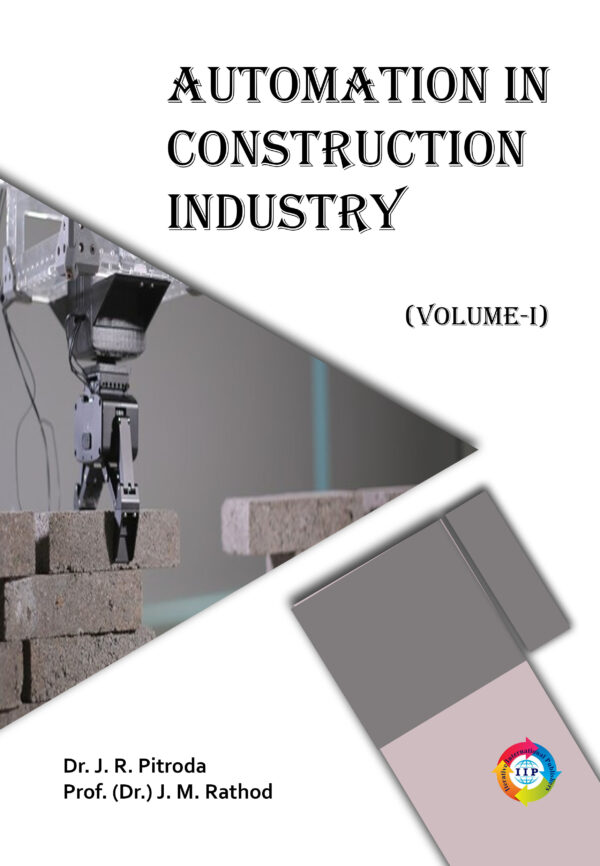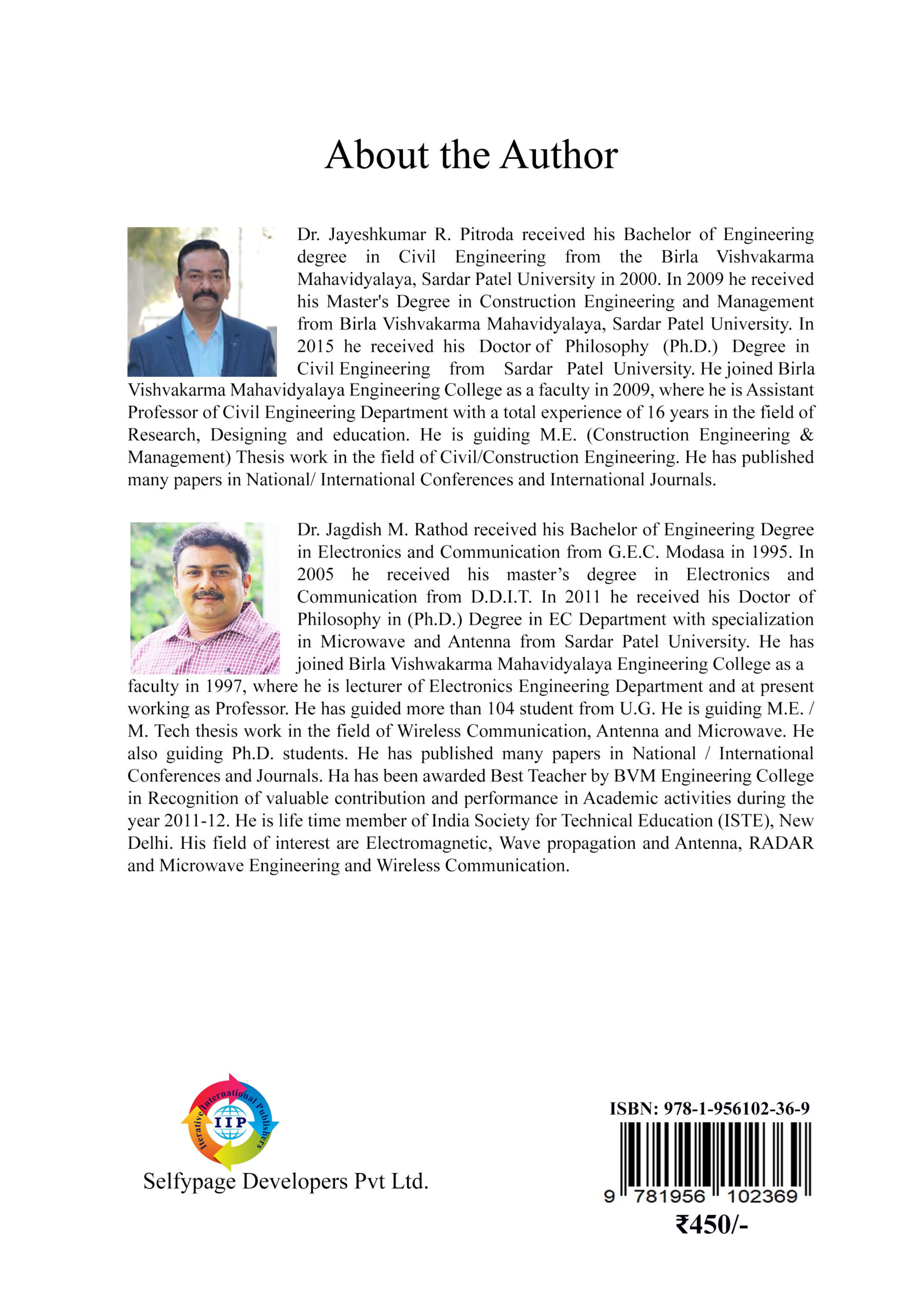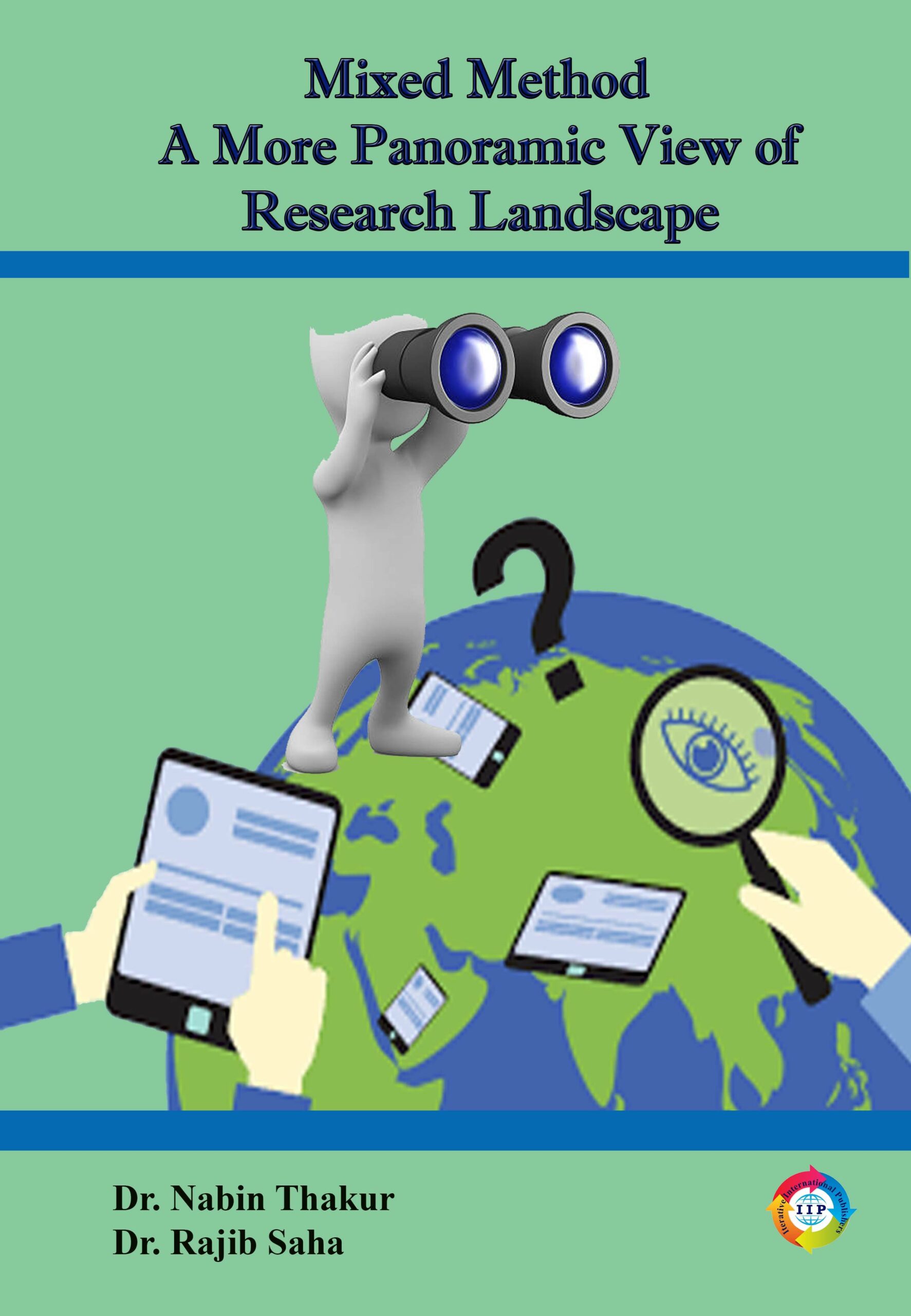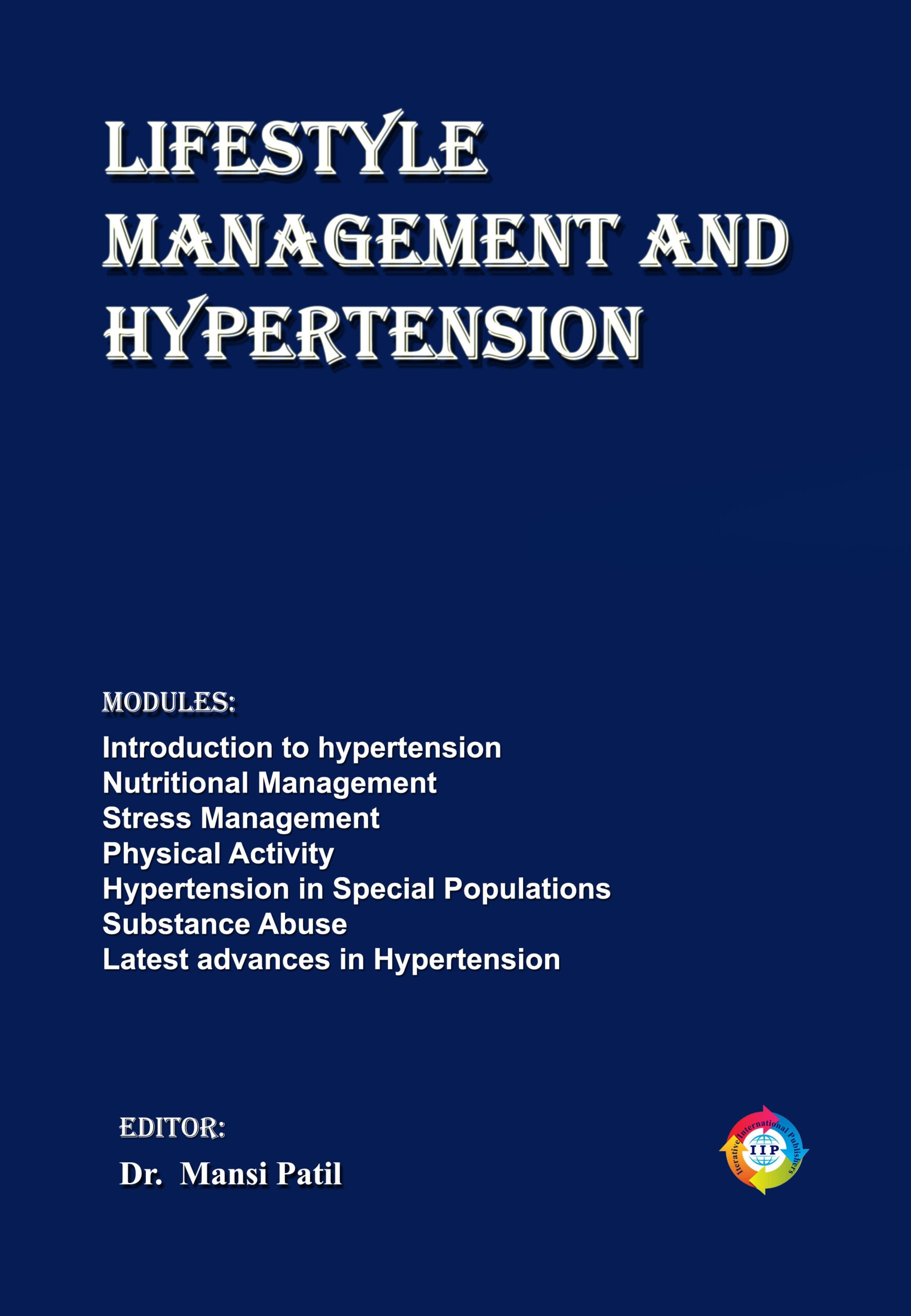Chapter 1 Intelligent Lighting Using Automation in Construction Dr. J. R. Pitroda, Abdul Latif Hamid, Prof. (Dr.) J. M. Rathod
The automation of devices and systems are changing the lives of ordinary people gradually. Smart devices and systems are gaining popularity due to the introduction of Internet of Things (IoT). As present devices and systems are smarter than their previous counterparts, nowadays smart buildings employ the recent advancement of modern technologies. In a smart building, devices are controlled automatically and intelligently as per the occupant’s preference. A smart lighting system is an essential part of a smart building. The smart lighting system employs techniques to control the lights automatically or semiautomatically and to adjust the light intensities based on occupant’s visual comfort. The smart lighting system may also comprise of heterogeneous lights and can be controlled using the same unified controlling system. Harnessing daylight makes a lighting system more energy-efficient.
Chapter 2 Importance of MEP Co-Ordination and Fire Safety in Building Dr. J. R. Pitroda, Dhanesh Hareshbhai Poriya, Prof. (Dr.) J. M. Rathod
Now-a-days, there are more emphasis on sustainability to improve the basic functional requirements like aesthetics, efficiency, economy, comfort and safety which have a great consequence on Mechanical, Electrical and Plumbing (MEP) system. MEP coordination is proven to be one of the grey areas on the basis of various studies carried out in past few decades. Mechanical, Electrical and Plumbing (MEP) Coordination can be defined as the process of managing interdependencies between each building system. The consequences of poor coordination will influence the performance of MEP systems. Therefore, MEP Coordination allows user to meet the critical design criteria and to achieve the project success within schedule and budget. To meet that criticality, it is required to evaluate the factors influencing MEP Coordination at Planning and Scheduling stages of construction industry which is the enlightened area of this research. Also, with this, fire safety system is as important as other systems of building. Because, at the time of fire hazards in building, fire safety system should be in v workable condition. So those hazards due to fire can be reduced. Intended report includes the case study on MEP co-ordination and fire in construction building.
Chapter 3 Robotics in Construction Dr. J. R. Pitroda, Raxak Ramaji Thakor, Prof. (Dr.) J. M. Rathod Robot
system used in building construction sites can efficiently reduce construction time and increase safety by replacing human in dangerous operations. Construction robots are defined as field robots and while operating in dynamic environment. Robotic systems have become common in many manufacturing and production operations because they have proven to be more robust, safe, efficient, accurate and productive. There are specific areas of application in which robots could benefit the industry. Feasibility of using robots in building construction is determined from comparison of robotic versus manual performance of pertinent building tasks. Automation through robots is not a new concept. Many of the manufacturing and service sectors are adopting most sophisticated robots to increase productivity and reliability. Construction industry which is most unorganized and labour intensive is no different. Robots are employed to map the construction site, to lay bricks, to fulfill materials as required etc. But still the modern huge structures and buildings are painted by human laborers. The chemical paints, working height poses high threat to the safety of painters. Adopting a Robot may eliminate these problem by working at great heights and improving the tangible benefits like productivity of painting process, reducing manpower, reducing construction lead time and construction costs thereby improving quality, work conditions, and safety.
Chapter 4 Energy Efficient Building and Room Automation Dr. J. R. Pitroda, Viraj Rajendrabhai Jadav, Prof. (Dr.) J. M. Rathod
With advancement of Automation technology, life is getting simpler and easier in all aspects. In today’s world Automatic systems are being preferred over manual system. With the rapid increase in the number of users of internet over the past decade has made Internet a part and parcel of life, and IoT is the latest and emerging internet technology. Internet of things is a growing network of everyday object-from industrial machine to consumer goods that can share information and complete tasks while you are busy with other activities. vi Wireless Home Automation system (WHAS) using IoT is a system that uses computers or mobile devices to control basic home functions and features automatically through internet from anywhere around the world, an automated home is sometimes called a smart home. It is meant to save the electric power and human energy. The home automation system differs from other system by allowing the user to operate the system from anywhere around the world through internet connection
Chapter 5 Automation in Construction Quality Control and Assessment Dr. J. R. Pitroda, Hasmukhbhai Dayabhai Makavana, Prof. (Dr.) J. M. Rathod
Construction Industry plays a major role in the economic growth of a nation and occupies a pivotal position in the nation’s development plans. India’s construction industry employs a work force of nearly 32 million and its market size is worth about Rs. 2, 48,000 crores. It is the second largest contributor to the GDP after the agricultural sector. Construction sector is viewed as a service industry. It generates substantial employment and provides growth impetus to other manufacturing sectors like cement, bitumen, iron and steel, chemicals, bricks, paints, tiles etc. whose combined value is Rs.1, 92,000 crores annually. The construction equipment market is valued at Rs.1,05,000 crores. As a 54% of all construction defects are related to human factors such as unskilled workers or insufficient supervision of construction work. Furthermore, 12% of construction defects are due to material and system failures. These statistics all suggest the importance of inspection for achieving higher construction quality. Defects experienced during construction are costly and preventable. However, inspection programs employed today cannot adequately detect and manage defects that occur on construction sites, as they are based on measurements at specific locations and times, and are not integrated into complete electronic models.
Chapter 6 Utilizing Drone Technology in Construction Dr. J. R. Pitroda, Chirag Samirkumar Mehta, Prof. (Dr.) J. M. Rathod
The use of drones and Unmanned Aerial Vehicles (UAV) has been increased in recent years for surveying, facility management and other relevant fields. However, more recently, the technological progress in the design and navigation of low-weight and autonomous drones and UAVs have resulted in their more practical and cost-effective operation in the fields of architectural vii engineering and construction management and monitoring. This study presents a framework for the development of a fully automated smart construction monitoring and reporting system based on real-time data obtained from drones and UAVs. The data in terms of drone images from multiple locations and point clouds (from 3D scanning of construction site) can be used to construct a 3D model using the photogrammetry techniques. This so- called “drone model” can be compared to BIM model at various construction stages to monitor the construction progress. Beside construction scheduling and costing, this comparison can be expanded to include real-time recording, reporting, billing, verification and planning. Using the example of a case study construction project, the effective use of drone data is demonstrated in terms of smart construction monitoring and comparisons between drone model and BIM model. It is shown that this fully automated system can significantly reduce the effort required in traditional construction monitoring and reporting procedures. The system not only provides convenient and smart ways of site supervision and management but also results in better operations, planning and effective onsite adjustments.
Chapter 7 Building Automation in Water Supply and Sanitary Systems Dr. J. R. Pitroda, Pankaj Dhanjibhai Varsani, Prof. (Dr.) J. M. Rathod
There is a rapid growth in wide urban residential areas, therefore it is a need to provide better water supply as well as to prevent the unnecessary wastage of water. In case of Apartment buildings or Villas, customers will face problems due to improper water supply management. This proposed Centralised water distribution monitoring and controlling system using PLC and SCADA is used to distribute the domestic water depending on their needs to all the individual houses in an Apartment building or Villas so that everyone will get the required amount of water depending on the number of members residing in each house and accordingly tariff will be applied. The set point is fixed for each house and the water from the storage tank to individual houses is measured with the help of flow sensors. Solenoid valve is used to open or close the valve automatically. If the flow rate for a particular house reaches its set point then a message will be sent to that customer through GSM module and the tariff applied will be hiked for the extra water used henceforth. The system consists of PLC and SCADA. PLC is used to control the distribution of water and SCADA is one of the emerging technologies which is used for complete monitoring. PLC gives the signal to the solenoid valve according to the input from the user through GSM or DTMF module. Here it also creates awareness about conserving water









Reviews
There are no reviews yet.